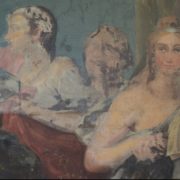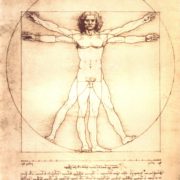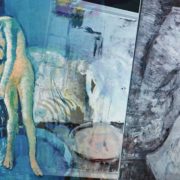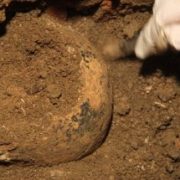Art and Restoration in the Age of Technology
It seems that art discoveries are in the news daily, spurred on by new technologies that are allowing us to look at artworks in a way that has never before been possible.
The works of Leonardo da Vinci have been easy targets. The Mona Lisa has been in the news repeatedly during the last few years, and different art historians and technicians have used different methods to see beneath the varnish and Leonardo’s paint and make discoveries about its earliest form.
Leonardo’s Last Supper has also made headlines this fall, with the inauguration of a new website which makes a 16 billion pixel image of the famous mural available online, something that has become more and more useful as access to the painting itself has become more restricted.
Also in the last month news came of “multispectral” high-resolution camera investigations on Leonardo’s Lady with an Ermine in the Czartoryski Museum, Krakow, which have enabled scientists to create a digital image of what Leonardo’s painting may have looked like when it was first created in the 1490s. The study of the portrait, which has been much altered by restorations, was undertaken by Pascal Cotte, who has also examined Leonardo’s Mona Lisa. Cotte has applied his technique to hundreds of paintings, gathering a database of “original” images. Cotte is not at all the first to embark on this path. Editech, founded in Italy three decades ago has performed “multi-spectral diagnostic imaging and analytical diagnostics” on more than 2500 paintings, creating a valuable resource of condition reports.
It is critical to remember that the conclusions drawn as a result of these diagnostic tests are not necessarily correct. Even the most “objective” scientific evidence requires interpretation, and so many of the public announcements that have been made, touting the newest discoveries of the original intentions of the artist, are not universally agreed upon, nor should they be.
Undoubtedly these technical advances offer many benefits, most notably the ability to study and virtually “restore” works without touching the originals, and to create facsimiles that could even be hung alongside their source works for further study. But the concern lies in the knowledge that historically latest technologies have often been used to promote rather than replace restorations. The fear in this case is that believing to fully understand what lies beneath the surface of an artwork will embolden restorers and justify their aims to go looking, with their preconceived notions, for what they now expect to find.










